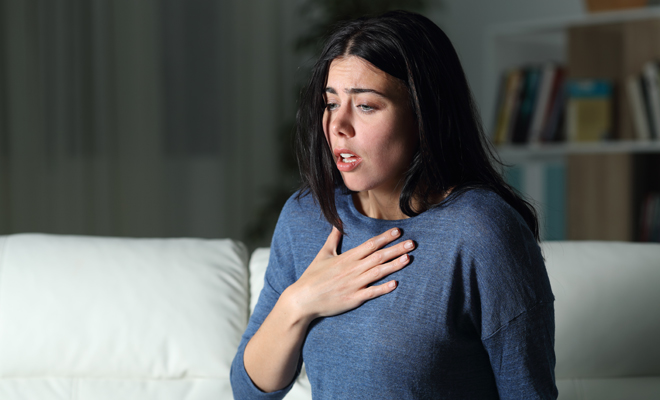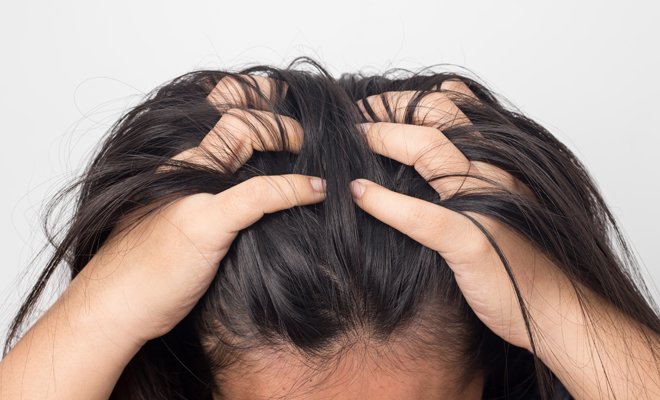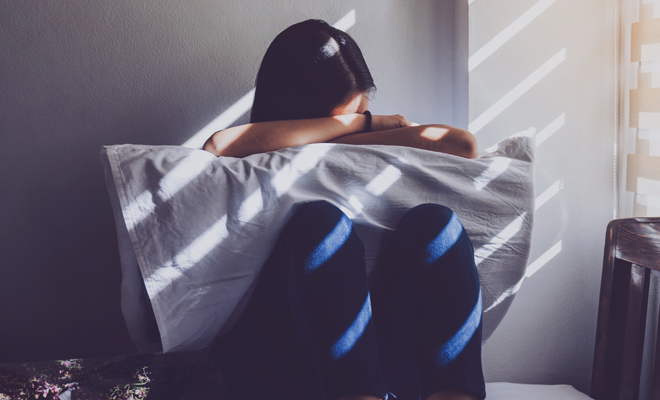Stress, fears, constant worries, anticipatory and catastrophic thoughts haunt us day after day, as a result of the pressures and demands of our development environments, almost inevitably.

All of this is a natural response from our body to anxiety, but if we don’t find a way to manage it in a healthy way, it can cause us many health and quality problems. To avoid this, we want to show you some easy yoga poses to control anxiety and relax.
How does anxiety affect quality of life?
Anxiety is a snowball state, that is, it triggers a series of negative moods such as stress, fears and, in more severe cases, depression, which leads to demotivation and poor performance, as well as withdrawal and social isolation. .
But it also causes more physical problems, such as power surges, high blood pressure, headaches, muscle tension, gastrointestinal problems, anemia and extreme fatigue, due to all the effort our body makes, damaging it instead of benefiting it.
Yoga for a healthy and relaxed life
Yoga is not only an excellent practice to lose weight and get in shape, but it also helps us balance our body, activate it naturally and maintain our mental health. This is due to controlled breathing work, concentration to correctly perform the postures and muscle activation, which helps to clear the mind and relax.
Likewise, yoga helps to balance the body’s natural response to stress, modulating the effects on its negative reaction. It also helps to have a positive state of mind and, by working dynamically with the body; we are able to strengthen the immune system, which helps us to counteract the somatic symptoms of anxiety.
The best yoga poses to calm anxiety
1 Downward Hands Pose (Uttanasana)
This is one of the most ideal postures to relax the whole body, while you work and stretch the muscles, in this way the body will feel lighter, fresher and healthier against the symptoms of anxiety.
This posture is very simple, just stand up in the sea (your mat or yoga mat), then stretch your chest and arms up, inhaling and exhaling, bring your entire torso and arms down trying to touch your feet with your hands, relax and breathe for 20 seconds.
2 Downward-Facing Dog Pose (Ado Mocha Svanasana)
To perform this pose, first drop onto your knees and hands, then lift your hips back, keeping your back as straight as possible, and straighten your legs and arms. Support yourself on your feet and hands, pushing the sea and hold the position for 20 seconds.
This posture helps activate the whole body and release serotonin hormones, which increases the mood and helps relax the muscles , once the routine is over.
3 Butterfly Pose (Buddha Kona Sana)
This position is a little more demanding, but it helps to relax the muscles of the back, which is where tension due to anxiety accumulates the most, and to reduce it with the work of breathing that is carried out in it.
Sit cross-legged on your mat, then level your legs and bring them as close to your pelvis as possible, touching the back of your thighs. Bring the soles of your feet together with your hands and let your knees drop to the sides as far as you can. Hold the pose for 10 seconds.
4 Seated Side Bend Pose (Jana Susana)
This is another excellent posture to release stress from the body, taking tension off the back and improving the gastrointestinal system, which is another point that is affected by anxiety symptoms.
To do this, return to sitting with your legs straight, then bend your left leg and make it touch the inner face of your right thigh, take a breath and lean over until you touch your right foot with the palms of your hands, hold for 10 seconds and repeat with the other leg.
5 Energizing Breathing Pose (Kapalabhati Pranayama)
This posture helps improve breathing by opening the chest, which helps stimulate metabolism and release tension that can cause muscle problems in the back, neck and abdomen.
To do it, sit cross-legged in the sea and with your back completely straight, place your hands on your knees, inhale deeply, expanding your abdomen and on exhaling, contract it as much as you can. Take a minimum of 10 breaths.
6 Camel Pose (Ustrasana)
This is another demanding posture, but one that brings many benefits against anxiety symptoms and to improve breathing, muscle relaxation, and clearing the mind.
It is performed by leaning on the knees and keeping the upper torso completely straight. Raise your chest and reach your hands behind your ankles, arching your back and stretching your chest forward for 10 seconds. Another variation is to take a single ankle and stretch the opposite arm up for ten breaths.
7 Crescent Pose (Arch Chandra Sana)
This is one of the most demanding postures, but one that brings the greatest benefit, since thanks to its balance work, muscular tension can be relieved and the mind cleared. It also helps to improve concentration and stretch the whole body.
It is performed by taking the left leg as far as possible, lowering both hands next to the right leg, leaving the right hand on the ground and stretching the left hand up while raising the left leg perpendicular to the ground. Once you get into the pose, hold for 10 seconds.
8 Bridge Pose (Setubandhasana)
To do this posture, we must lie down with our knees raised and our feet firmly on the ground, arms out to the sides and our backs resting on the ground. Hips are pushed up and held for 10 seconds. You can raise your hips on the inhale and lower them on the exhale for 10 breaths.
This pose helps relax your back and neck, relieve tension in your abdominal area, and relax your body while fully activating it.
9 Upper Twist Pose (Arch Matsyendrasana)
Sitting on the floor, we stretch our legs completely, keeping our backs straight, place our right hand on the floor and rotate our torso to the opposite side, bringing our left hand as far back as possible. We hold for 10 seconds and repeat on the other side.
This torsion helps us stretch our backs and relieve stomach problems, releasing any pressure and muscle tension they may have, it also helps us improve breathing, concentration and relaxation.
10 Child’s Pose (Balmacaan)
This is the best posture to relax our entire body and release muscle tension, so it is ideal to do it after work or to finish yoga work.
To do this, we place ourselves in position four, we bring our hands a little further forward and push our torso back, lower our neck and head, bringing our hips over our heels and stretching our arms forward.
11 Dead man’s pose (Sava Sana)
It is the final relaxation posture after the yoga routine, it is the main relaxation posture since it leads us toe, while we return our breathing to its natural state, relax our muscles and enjoy the work done.
This is simply done by lying down completely on the sea, with the legs, feet and arms stretched out at rest. We release the muscles, relax our face and stay breathing deeply for 20 seconds.
Remember that, to obtain the best results to relieve anxiety with yoga, it is necessary to perform constant yoga routines, at least 3 or 4 times a day. In addition, you must have a healthy lifestyle, have a good rest routine, balanced and do activities that clear your mind.






